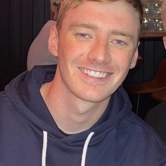Guide to Driving on the Motorway
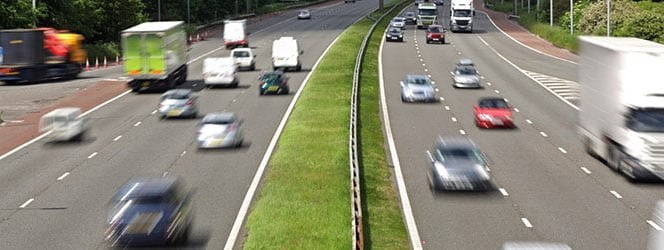
In this section, we examine the rules governing motorway use and discuss safe and best practice, including:

In many ways, the rigid rules of the motorway actually make it a lot safer for the motorists who use it. Ultimately, however, the speed involved makes driving there unsafe for a number of vehicles, thus forcing the government to legislate against their use. Vehicles prohibited from using motorways include:
- Provisional licence holders
- Motorcycles under 50cc
- Agricultural vehicles
- Vehicles carrying oversized loads (anything that causes you to take up extra lanes – when exceptions are made, they’re often escorted)
- Pedestrians
- Cyclists
- Horse riders
- Mobility scooters
Notable groups that are allowed on the motorway include anyone who has recently passed their test and drivers of lower-powered city cars – two groups that are often on the receiving end of criticism from other road users.

Motorways are designed to aid traffic joining to merge seamlessly into the traffic already on the road, but smooth operation is still dependent on your following the best practice in Highway Code section 259. Remember that:
- The traffic already on the motorway has priority
- You should adjust your speed on the slip road to match that of the cars in the left-hand lane of the main carriageway
- Remain on the slip road if it becomes the left-hand lane (junctions such as these are known as ‘lane gain’ junctions, because the slip road goes on to form an additional lane of the main carriageway)
- You should not cross solid white lines, or the hatched markings between the slip road and the main carriageway
Remember to look over your right shoulder to check traffic – your mirrors alone will not be sufficient.
“Travelling on the motorway may feel daunting, regardless of how much experience you have behind the wheel. Try building up your confidence by starting with a quieter stretch of road and avoiding rush hour. Be sure to also stay within the speed limit and keep left unless you're overtaking.”

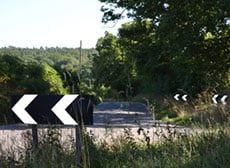
Motorway driving is obviously quite different to driving on a typical road. Be sure that you know:
- How speed limits differ, and what speed limit applies to your vehicle
- How to overtake using the multiple lanes available to you
- Which lane you should be driving in, and when
In addition to the above tips, which are elaborated upon in depth below, remember these general bits of best practice:
- Always keep your distance from the car in front – your stopping distance is greatly increased at motorway speeds. On some sections of motorway, the minimum distance you should be driving apart is indicated by chevrons painted on the road surface – keep two between you and the car in front at a minimum. Without this indicator, drive at least two seconds behind the vehicle in front – pick a landmark to measure this against. Where possible, a greater stopping distance should be left, on wet roads the gap should be at least doubled, and increased further still on icy roads
- Do not speed up when someone is failing to keep adequate space between you and them (i.e. when they are ‘tailgating’). It is safest to move to a slower lane, if available
- Don’t continue driving on the motorway if you are feeling tired. If you do begin feeling tired, rest immediately. If you are heading off on a long journey, plan it so you get at least 15 minutes rest every two to three hours

Speed limits
Motorway speed limits are relatively straightforward: the upper limit is 70mph (112kph) for all vehicles. However, the following vehicles must drive at 60mph (96kph):
- Cars towing caravans or trailers
- Goods vehicles towing a trailer
- Articulated goods vehicles
- Goods vehicles that weigh over 7.5 tonnes
This all goes out of the window, of course, if motorway signals and variable signs indicate a lower speed limit. These limits are usually deployed to ensure safe transit in adverse weather conditions, in the event of an accident or when road works are being carried out.
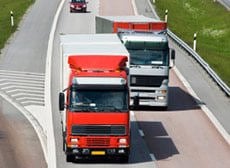
Overtaking & undertaking
The Highway Code (section 267) states that you should “overtake only on the right” and only when “you are sure it is safe and legal to do so”. However, undertaking on the motorway is accepted to be a reality of traffic’s natural ebb-and-flow: it would be dangerous to slow down in a left-hand lane in order to stay behind a congested right hand lane. Despite this, there is no good reason to undertake when overtaking is perfectly safe and the proper course of action. When overtaking you should:
- Check your mirrors
- Check your speed
- Check the lane is clear both ahead and behind
- Take a quick glance into your blindspot
- Signal and leave plenty of time before pulling out
You should never use the hard shoulder to overtake, though areas with Active Traffic Management Schemes will sometimes permit travel on the hard shoulder (by showing a speed limit above it).
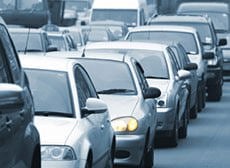
Which lane?
The Highway Code (sections 264 to 265) clearly sets out the rules surrounding lane discipline:
- You should always drive in the left-hand lane if the road ahead is clear
- You should return to the left-hand lane as soon as you have safely passed slower-moving vehicles
- The hard-shoulder must only be used in emergencies, or when signage, the police or the Highways Agency indicates that the lane is in use
Recent changes to the law allow for on the spot fines for bad lane discipline, along with other common driving offences that are often kept out of the courts due to the large amount of bureaucracy involved.
Slow or speed-restricted vehicles must remain in the left-hand lane for the duration of their journey. Additionally, the following vehicles are prohibited from travelling in the right-hand lane on motorways with three or more lanes:
- Any vehicle with a trailer
- Speed-limited goods vehicles weighing between 3.5 and 7.5 tonnes
- Goods vehicles weighing above 7.5 tonnes in weight
- Passenger vehicles seating nine or more people (inclusive of the driver) that weigh more than 7.5 tonnes
- Speed-limited passenger vehicles matching the above specification

In the vast majority of scenarios, you will be leaving the motorway via a left-hand slip road; exceptions to this rule will be clearly and repeatedly indicated on signs and signals. The process of leaving the motorway is simple enough:
- Watch for your intended exit on the road signs. Each exit is clearly marked with a junction map at one mile and half a mile away. Countdown markers denoting 300, 200 and 100 yards are also shown
- Move to the left hand lane before you reach the second of the larger signs (i.e. over half a mile away). If you are not in the left hand lane by this point, do not panic – observe lane switching best practice and calmly get in position
- As you pass the 300 yard marker, signal left to let other motorists know your intentions
- Reduce your speed if leaving the motorway – check your speedometer and gradually (and safely) reduced your speed to 30mph
The above best practice broadly applies to getting in lane when motorways split at interchanges – simply replace the ‘left lane’ with ‘your intended lane’, which will be indicated by overhead signals and signage.
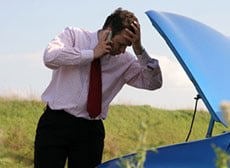
When can I use the hard shoulder?
The hard shoulder is only for emergency use and should never be considered a safe space to stop – it has been suggested that since 2000, 800 people a year are killed or injured on the hard shoulder. The limited reasons for using the hard shoulder are:
- A complete immobilisation of your vehicle through mechanical failure or a crash
- A serious medical emergency
- Being told to stop by the police
- On smart motorways (where permitted)
Nonetheless, people frequently risk their lives by parking on the hard shoulder for trivial reasons, including: reading maps, making mobile phone calls and going to the toilet. Even if your car has a minor fault that may become serious, it is still safest to leave the motorway at the next exit. If caught stopping on the hard shoulder without justifiable reason, you can receive an on the spot fine of £50 – particularly dangerous use could involve points on your licence.
To stop on the hard shoulder:
- Signal and pull onto the hard shoulder, as far over as possible, turning your wheels away from passing traffic. Try to park near an emergency phone if possible
- Turn on your hazard warning lights
- You and your passengers should leave the vehicle via the left passenger doors and wait on the verge until help arrives
Trying to stay on top of all things road law? Nationwide Vehicle Contracts produce a range of guides on UK Road Law, from Seatbelt Law to Parking.
We are also one of the UK's largest car leasing brokers, offering a range of leasing services such as in stock car leasing and used car leasing.
Guide Information
Originally published: 24th September 2015
Last updated: 15th October 2022
